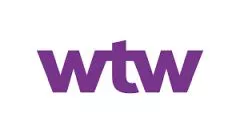Employers will need to be confident that their pay and benefits are ready for greater transparency the challenge for many organisations will be the cultural shift on how they talk about pay.
The EU is using greater pay transparency and enforcement rights to ensure employers are delivering equal pay. It is part of a five-year focus within the EU on equality in the workplace.
In short, the Pay Transparency Directive gives employees extensive new rights to information about their own pay and the pay of male and female peers. You can read more about the Directive and the practical implications here.
Employers will need to be confident that their pay and benefits are ready for greater transparency; the challenge for many organisations will be the cultural shift on how they talk about pay. However, one of the greatest challenges for most to many organisations will be the cultural shift on how they talk about pay. Organisations need to be preparing to:
- Define a strong pay equity narrative.
- Prepare managers and leadership for shared ownership of delivering pay equity.
- Plan a 3-year communications approach.
- Educate employees about how both work is defined, and pay is managed to be fair against peers, performance and the market.
- Deliver on the disclosure requirements of the Directive from
2027 using technology.
Communication planning needs to start now
Most companies are starting to prepare now as it may take multiple years to get ready. A key part of assessing how ready you are for pay transparency involves planning the communication required. Some will be more ready than others — maybe you already communicate pay ranges or people are clear about their position within an established levelling structure. Despite where you are on the journey, it's imperative that you start today.
Developing a strong narrative
First, it is essential that organisations have a strong pay equity narrative. It sets the foundations for how you will review, design, and assess career and reward policies and programmes going forward.
Organisations leading the way on pay equity already have a strong narrative in place, internally and externally. This expresses what pay commitments will be made at a company level, like providing consistent and fair compensation based only on the legitimate drivers of pay.
A strong narrative will align with your values and purpose as an employer and fit into your overall people strategy. It's the right thing to do as a responsible employer and can be a big part of your total reward philosophy to drive pay for performance.
It can also form a key pillar of your Diversity, Equity and Inclusion (DEI) strategy. There is enough research to show the connection between diverse teams and strong financial performance. Use this change to emphasise the value of an inclusive workplace that aims to hire and retain diverse talent.
Reinforce the narrative in all conversations about pay with both prospective and current employees. This can be through total reward statements, announcements on incentive plans, performance/pay reviews, and careers websites.
Establish a shared culture of ownership and plan a 3-year communications approach
You need to carefully consider several different audiences and stakeholders as part of the journey towards greater pay transparency. Robust and objective HR policies and processes only support pay equity if they are adopted by those involved in hiring, pay review and promotion cases.
Plan to engage with the following stakeholders in the short term:
- Performance and reward teams need to understand all the processes associated with recruitment, promotion, pay review and performance assessment, to support your pay equity journey.
- Recruiters need to meet the requirements of the directive, like making initial pay information available prior to the first interview and refraining from asking questions about previous employment pay.
- Compensation managers need to understand and adopt processes appropriately, along with understand the consequences of not doing so properly.' to 'Compensation managers need to understand and adopt processes appropriately, along with understanding the consequences of not doing so properly.
- Leaders should advocate and talk confidently around your steps towards pay equity and transparency as an organisation.
Educating employees
By 2027, you will need to be able to explain any differences in pay with the help of legitimate drivers like location, experience, and skills. But before that, you can help employees understand the pay processes in place and how pay is decided currently as well as explain how work is defined through your job architecture. Building trust on pay management processes will go a long way to help you effectively communicate the reasons for any justifiable differences in the future.
As the Pay Transparency Directive comes into effect, you will need to carefully plan the experience.
As the Pay Transparency Directive comes into effect, you will need to carefully plan the experience for the following audiences:
- Prospective employees will need to understand your pay narrative and be clear on how they can access initial pay levels or ranges within the application process.
- Current employees need to know how you are delivering on the requirements of the Directive and the data they have access to or can request. They'll also need annual reminders on their right to access this information.
- Workers' representatives will need to understand how you're intending to be compliant. Engage them in the process, set out proposals for how you will share information with representatives and how it will be made available to employees where others are working on their behalf.
Ahead of the Pay Transparency Directive taking effect, it is also critical that leaders can talk about their organisation's pathway to greater transparency, and that managers understand the organisation's pay processes and can talk confidently about them.
Using technology to deliver on the disclosure requirements of the journey
Finally, organisations need to consider their approach to disclosing what is available under the new rights to information. We believe that, rather than being inundated with questions and requests from employees and their representatives, organisations should opt for a route where information is proactively shared with employees.
In order to deliver this information, organisations need to provide a solution which is:
- Connected to HRIS / Payroll data – which can be refreshed on a regular basis easily.
- Fully customisable – so you can provide education about your pay philosophy, programmes and policies alongside the data.
- Able to provide different views to different stakeholders – so that managers can see the information of their reports and get advice around how to hold different conversations about pay.
- Accessible any time on any device – to remove any obstacles individuals may have based on their working environment.
Embark, our employee experience platform, helps deliver on all of these requirements and more.
Next steps
As organisations approach their communications plans for the future it will be important to start the work now, rather than wait. Talk to us about how you can prepare your communications ahead of the EU Pay Directive.
The content of this article is intended to provide a general guide to the subject matter. Specialist advice should be sought about your specific circumstances.



